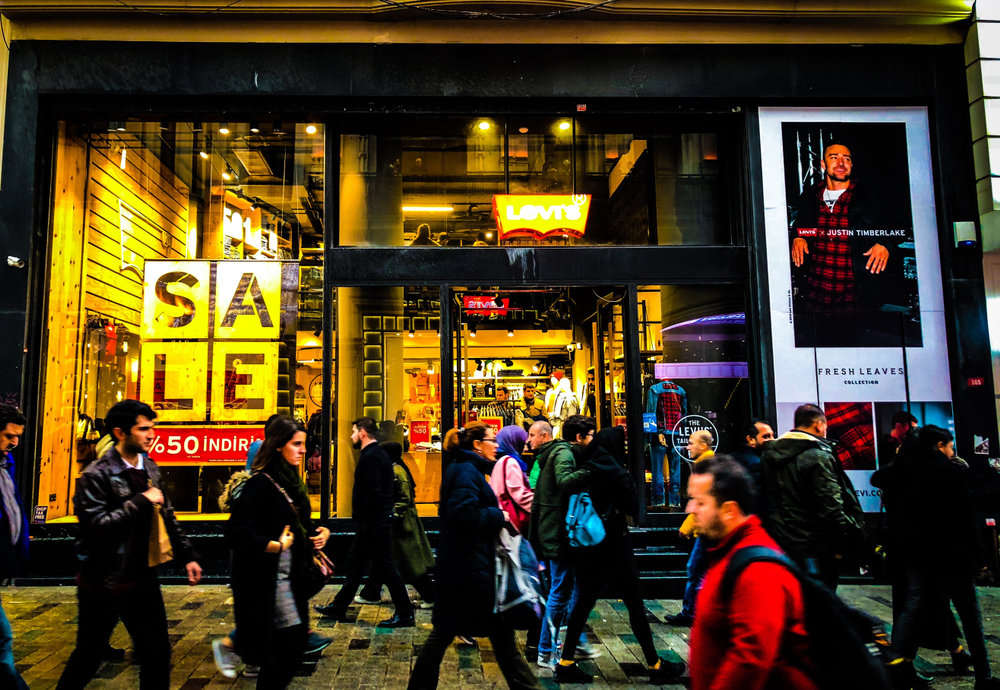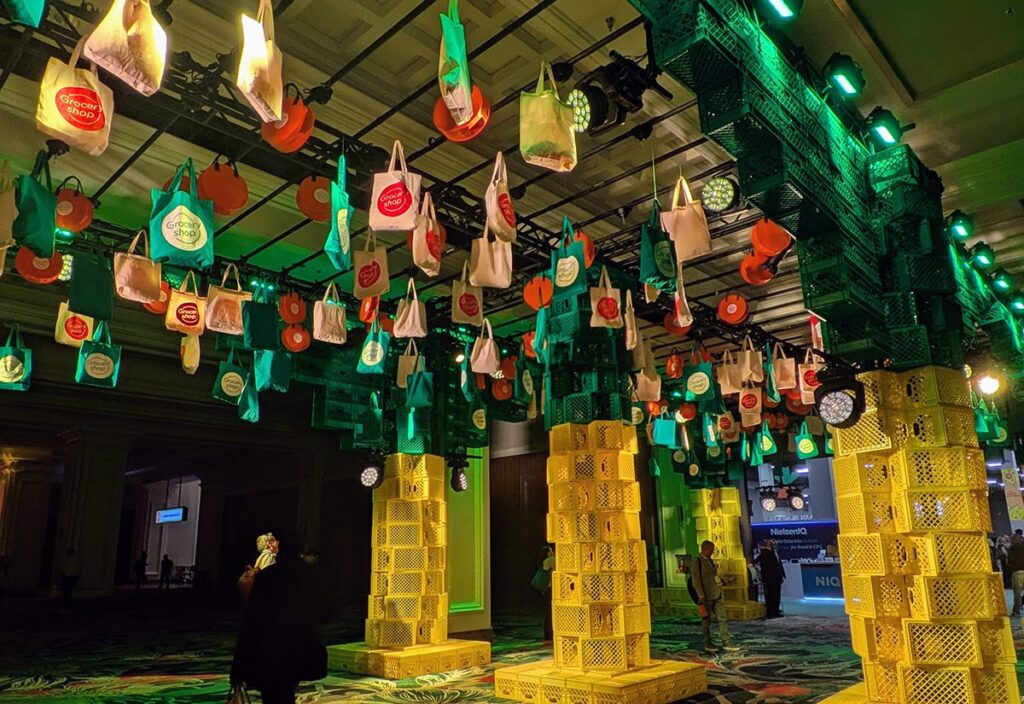Forget about the so-called retail apocalypse. We’re now amid a retail renaissance, according to Ethan Chernofsky, SVP of Marketing at locations analytics provider Placer.ai. During a session at last month’s POSSIBLE conference in Miami, he argued that the role of brick-and-mortar stores is more important now than it was pre-pandemic. But to understand why—let alone to take advantage of it—requires looking beyond sales per square foot as a measure of retail success.
“When we look at an Instagram channel for a great brand and they have millions and millions of followers, we don’t say, ‘Well, how many sales per follower do they have?’ We say, ‘Oh my God, this is an amazing challenge that enables a connection between the brand and their audiences. It enables exposure, it enables relationships,’” Chernofsky said. “We understood that there are a multitude of values that can be driven by digital tech, but we never applied that much to the store until now.”
Offering in-store pickup or returns of online purchases is one way brands are maximizing the value of their physical stores. But that’s only a start. Retailers should also lean into the fact that, contrary to what the initial explosive growth of e-commerce suggested, convenience is not always shoppers’ top priority. If it were, consumers wouldn’t regularly visit both a specialty grocery store such as Trader Joe’s and a traditional supermarket in a given week: “They’re willing to drive farther away, even when gas prices are high, because they’re seeking out the things that they want, that really move the needle for them.”
Chernofsky cited four “ripple effects” of the retail renaissance and discussed how marketers can take advantage of them.
1. An expanded view of omnichannel retail.
Because omnichannel indicates using every channel available, Chernofsky prefers the term harmonized retail. This suggests “we want to have a specific number of channels that work well in sync. We want to think about lifetime value. We want to think about what our consumer actually needs and what channels we can do well,” he explained. Emails and push notifications offer an unrivaled level of personalization; physical stores excel at engaging senses beyond the visual and aural, along with encouraging discovery: “When I walk through the cereal aisle [in a supermarket], there is no moment in time when I’m more excited about cereal. And the ability to tap into that is exactly what we’re talking about in terms of the promise of that channel.”
More than simply offering consumers a linear selection of channels from which to shop, brands will benefit from “bringing different experiences and digital channels to different audiences based on their consumption patterns,” Chernofsky said. “And the key is we’re going to start thinking about this as a loop, not as an array of channels that we throw at the consumer. It’s our way of providing a better lifestyle guide.”
2. Doing more with less.
This concept isn’t new. But in terms of physical retail, it is manifesting itself in brands reducing the number of stores they operate while maximizing the value of those remaining. And to increase revenue per store as well as optimize the halo effect of a physical presence—how a brick-and-mortar store might increase online sales within that area, for instance—brands have to stretch themselves.
“From an advertising/marketing perspective, when you’re looking to maximize things you’ve already invested in… our opportunity for creativity is expanding,” Chernofsky said. “So the emphasis on better creative, better messaging, better installations, better collaborations is going to increase.”
3. A shift in the themes used to understand consumers.
In addition to demographic and psychographic data, marketers are now focusing on behavioral data as well. Again, this isn’t necessarily new, but more brands are using this information to determine how best to harmonize and optimize their channels. When brands look beyond who their customers are to consider what they do, “it changes the way they use their world, their distribution, their advertising, who their audience is and could be,” Chernofsky said.
He illustrated this with a hypothetical example of a business launching an inexpensive protein bar in its choice of 250 CVS stores. Demographic data would suggest placing the product in stores that overindex for men 18-25 with modest incomes. But once behavioral data is factored in, the better choice might be to select the 250 CVS stores with the most clients who also regularly visit a moderately priced gym. This added information shows consumers who prioritize fitness in practice rather than those who might do so in theory. “Because it’s not just enough to say this audience likes something or an audience in this segment is over-oriented,” Chernofsy said. “There’s so much information that we’ll understand better by thinking about the way people behave.”
4. An emphasis on experience and engagement.
Chernofsky referenced Biggby Coffee’s becoming the official coffee of the Detroit Tigers baseball team, which resulted in retail visits within the Detroit area exceeding the chain’s national average. Biggby benefited from engaging with consumers who enjoyed the experience of watching baseball and of being associated with that positive experience.
By and large, however, retailers are failing to make themselves part of engaging experiences, Chernofsky said. “We’re missing it in in main streets, in areas that are packed with people who are looking to engage, who are looking to be engaged with,” he said. “The physical spaces that are going to be the most successful, the innovations that are going to see the best embracing of [this], are going to be those that drive this value across the world.”




